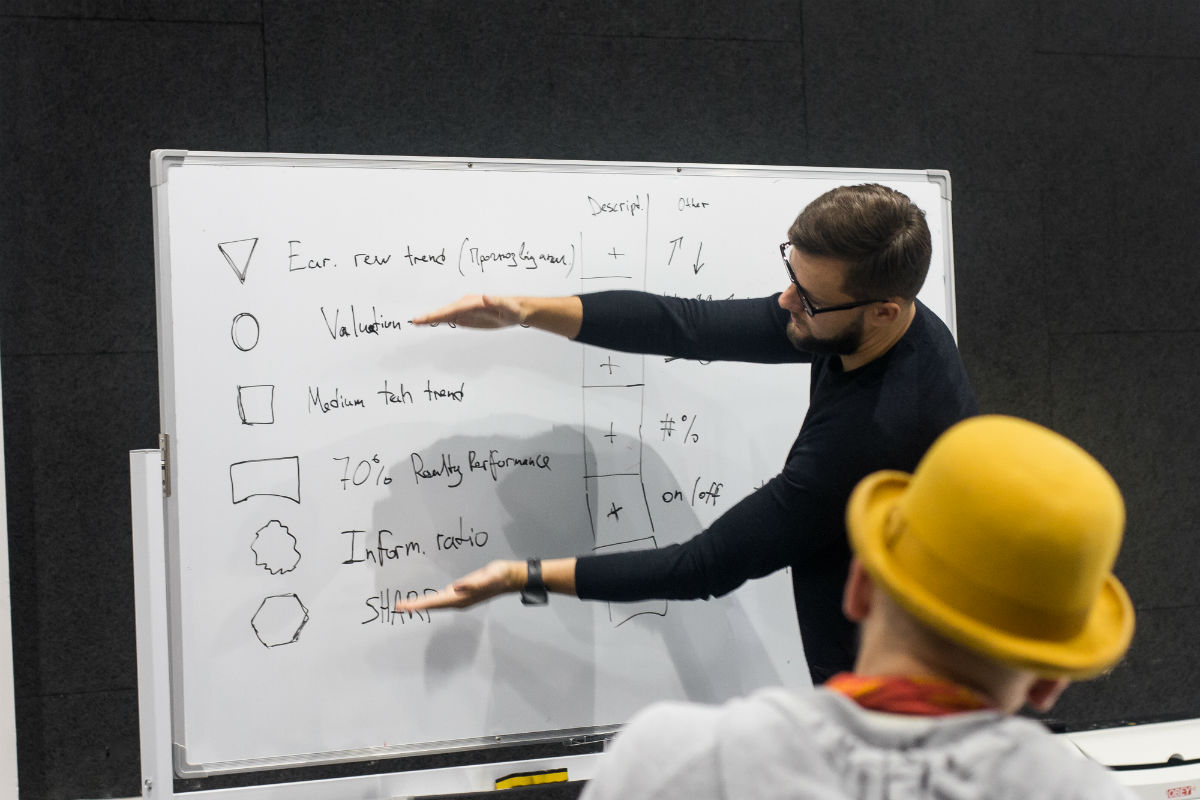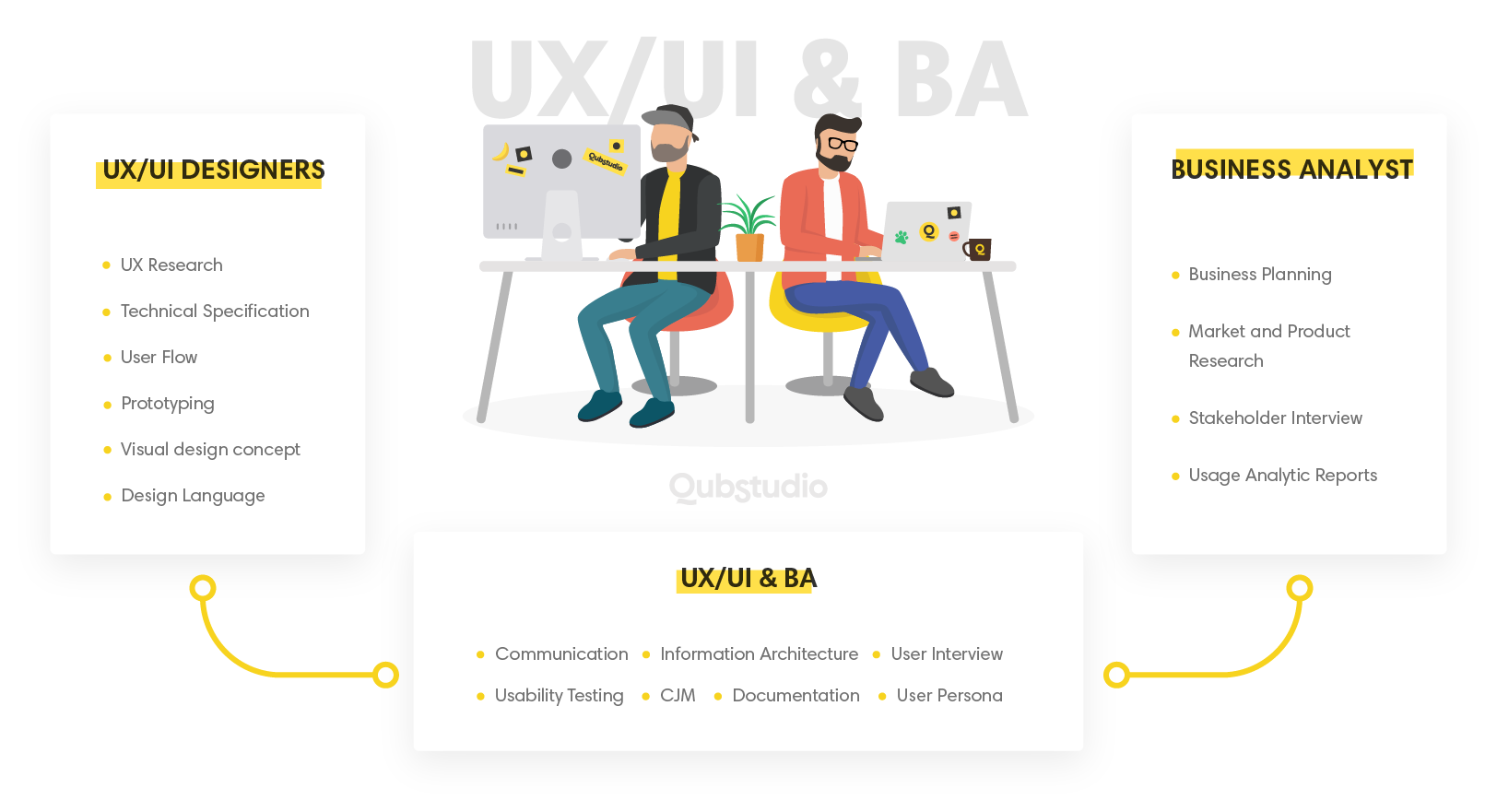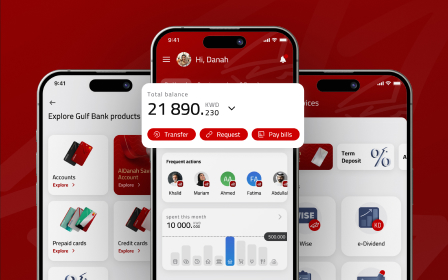Business analysis and UX/UI design collaboration

Imagine the work done to publish a newspaper. The ideas are written by a writer, edited by an editor, and published by a publisher. The three work in harmony to deliver a product to an intended audience and each is paid due diligence. The publisher decides whether the project fits the brand criteria but also appeals to consumers. The editor deals with the text’s nuance, utilizing research and knowledge of language to cut and shape the text for readers to digest. The writer uses their creativity and vocabulary to deliver a message in a meaningful way.
The process between an idea and a product is long and arduous but methodical. A trifecta of a Business Analyst, User Experience Designer, and User Interface Designer weaves the perfect combination of consumer needs and business needs. They are the people responsible for bringing the best UX/UI design company product or service. They make people want things. But what do they do exactly?
Short Differences Between UX and UI Designer
User Experience, or UX designer, focuses on the consumer’s journey, i.e., how they feel about their experience. Imagine the audience’s accessibility to a product, from seeing it on an advertisement to buying it in a store, opening the box, using it, and even troubleshooting problems. The responsibility of the product’s look and feeling lands in the User Interface, or UI, design hands. Between UX and UI, their work overlaps at some cycle stages. Now think of the editor and the writer. They work closely together to make the writing more effective, fine-tuning and editing as the process moves along. The design also utilizes an editing process through each project phase.
Who is a Business Analyst?
The BA works through all product’s life cycle phases, ensuring information and feedback flow between business and user. The information gathered from testing and feedback goes to the UX to revise and enhance the product or service. The Business Analyst in a software company serves the same function. They carry out various testing, surveys and process the information as a resource for UX and UI designers. Through the design lifecycle, the BA is present and active in the project’s successful accomplishment. Though their skills overlap with UI and UX, they generate business-oriented solutions for the project. So how do business analysis and UX design work together?
BA and UX/UI roles and responsibilities in projects
The relationship between the UX and BA is similar to the relationship between an editor and a publisher. The publisher determines if the work is marketable and if it will reach the intended target. If not, they address the issues and revisit steps until it is ready to deliver. The editor checks the work making sure the language is appropriate, themes and plot devices are cohesive and coherent, and the reader understands the text and responds positively. It mirrors the same process in designing a product and an experience.

The BA’s responsibilities also overlap with UI and UX. However, they focus on the business needs like product marketability and longevity to the intended target. They are business-minded but also solution-driven. They act as the liaison between the business stakeholders and the design team, and the rest of the employees working on a particular project. The business analyst’s role in the design phase is essential to all moving parts involved. A business analyst role in the IT industry is crucial for the cohesion of a team. Because the BA has their hand in so many jars, they must understand everything to bridge each design team’s gaps. Communication is vital for BA. They listen to the UX to understand problems with the product. They listen to the UI to know how to cater to the audience. Also, they listen to the user’s needs to give those needs to the teams to solve.
The role of BA at each step of UI/UX design life cycle
1. Initiation and Analysis
During the project initiation, several questions are addressed to identify an objective or need to be fulfilled. There, the BA conducts research, presents a business case, and decides how to reach the purpose effectively. How does the project fill a need? UI and UX teams can address potential problems at this stage so that the business heads will understand their objective limitations.
2. Development and Design
The solution is then developed into achievable milestones so UX and UI can monitor progress. A business analyst’s role in the design phase creates cohesion — the BA bridges these teams to estimate costs and assess the risks to measure the project progress better.
3. Execution
The plan implementation is executed; all teams begin to carry out tasks. At this point, the BA actively participates with each team to understand the project on all levels. The business analyst in designing UI/UX prototypes explains how the work reflects the business goals. They update and check in with everyone until the project is ready.
4. Testing and Feedback
Once all the necessary work is completed, all loose ends are tied up between suppliers and designers, and project resources. The project is handed to the business stakeholders, and the BA explains the project at length, emphasizing how it achieves the business goals. The project goes through testing, feedback, and analysis, which the BA acts as a support role for these steps.
5. Evolution and Innovation
With the feedback, the teams upgrade and create new project iterations to make it more efficient on both the business and user sides. The Business Analyst starts the cycle over with initiation and analysis of these new iterations.
Reasons for this collaboration and the benefits you get
Each team has specialties that they handle. Let us explain. For example, you wouldn’t expect a business-oriented person to know how to create and adapt a desktop or mobile project, just as you wouldn’t expect a UX designer to create business solutions for a project. They work in tandem so that the flow from phase to phase is seamless and all bases are covered with efficiency and accuracy. If teams were to work strictly individually, communication would become a problem as each discipline’s languages differ.
How to improve BA and UI/UX designer collaboration
Each role is vital during the project scope. There is no “I”; there is only a team in which all members work together harmoniously.
- Having open communication lines among all three disciplines creates a network for workers to ask and answer questions about the work process. A better understanding of what another team does provides a background with the project and builds rapport and solidarity.
- Having open communication lines among all three disciplines creates a network for workers to ask and answer questions about the work process. A better understanding of what another team does provides a background with the project and builds rapport and solidarity.
- Set hard deadlines and remind them often. If you run out of time, you also run out of money. Make sure that teams understand their dependence on each other’s work to be finished on time.
- Gather feedback from all points to get another view on a problem and its solution. It creates a better collaborative setting.
Conclusion
From idea to the drawing board, production, and execution, a project relies on all parties involved. Each pulls their weight, and as a result, the project becomes a success. The Business Analyst role is equally important as a great UX and UI design team. Effective collaboration creates a product worth investing time and energy into, and the Business Analyst is vital to this collaboration.




